Tiananmen Square
Tian'anmen Square, located in the center of Beijing, is located in the East Chang'an Street of Dongcheng District, Beijing, from Tian'anmen Street in the north to Zhengyang Gate in the south, from the National Museum of China in the east to the Great Hall of the People in the west, 880 meters long in the north and 880 meters long, 500 meters wide in the East and west, covering an area of 440,000 square meters. It can accommodate 1 million people to hold a grand The square.
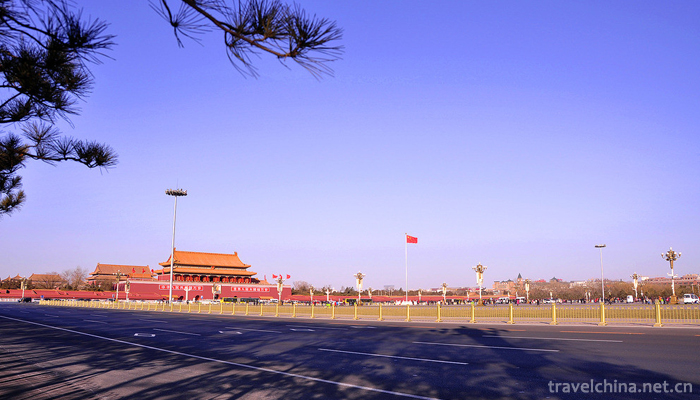
The ground of the square is all made of light-colored granite strips treated by special techniques. In the center stands the monument of the people's heroes and the solemn Memorial Hall of Chairman Mao. On both sides of Tian'anmen are the Labor People's Cultural Palace and Zhongshan Park, which are integrated with Tian'anmen and form Tian'anmen Square. In 1986, Tiananmen square was selected as one of the sixteen scenes of Beijing, with the name of "Tianan Li day".
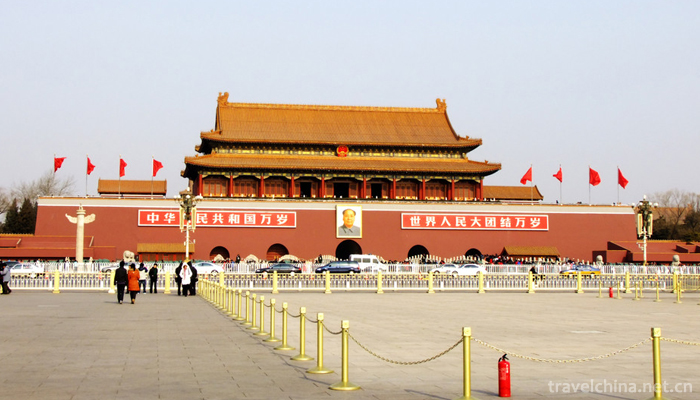
Tian'anmen Square records the Chinese people's indomitable revolutionary spirit and courageous heroism. The May 4th Movement, the January 29th Movement and the May 2nd Movement all left a strong color for the history of China's modern revolution. At the same time, Tian'anmen Square is the place where countless important political and historical events took place. It is also the place of China's decline and rise. Historical testimony.
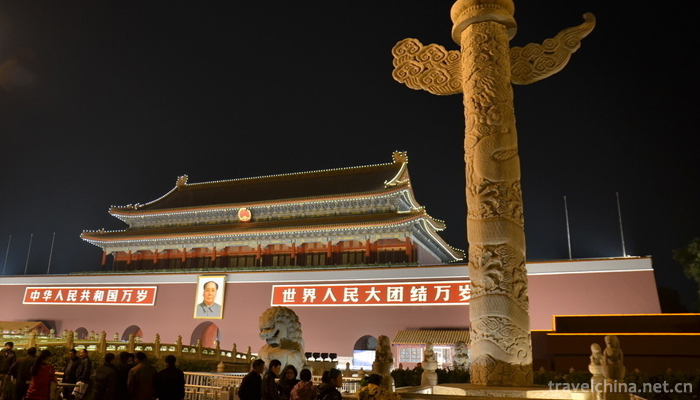
At 7:36 on January 1, 2018, the flag-raising ceremony at Tian'anmen Square was performed for the first time by the honorary guard of the People's Liberation Army and the military band.
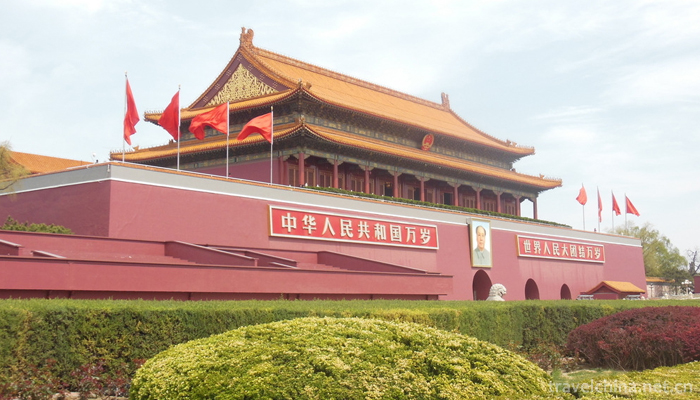
Tiananmen, formerly known as tiantianmen, was built in Yongle for fifteen years (1417).

After eight years of renovation (1651), it was called Tiananmen. At this time, Tian'anmen Square is just a closed T-shaped Palace square, an important place for the Ming and Qing Dynasties to hold major celebrations and issue decrees to the whole country, also represents the dignity of the imperial power.
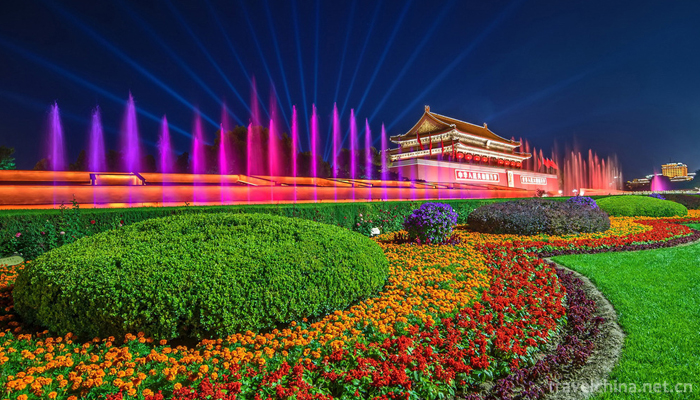
In the 26th year of Guangxu (1900), the Allied Forces of the Eight Kingdoms invaded Beijing, and Tiananmen Square was regarded as a place for the invaders to garrison their troops.
In the three year of 1914 (1914), in May, the Beiyang government launched the transformation of the old capital plan. Removal of the 1000-step corridor in front of Tian'anmen Gate, construction of asphalt roads, urn city, etc., the original closed Palace Square into an open space for free passage and stay, the dignity and mystery of the imperial power was dissolved. Because of Zhu Qijun's first renovation of Tiananmen Square, Tiananmen Square began to become a modern square.
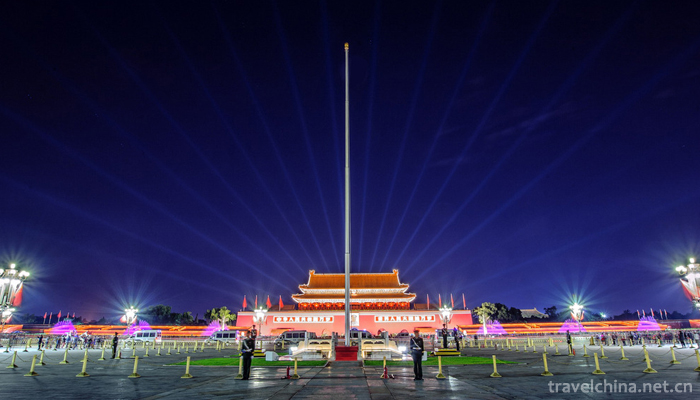
In seventeen years (1928), Jiang Jieshi won the northern expedition. In July, 70 thousand military and political organizations in Beiping held a celebration conference in front of Tiananmen. On August 24, a portrait of Sun Yat-sen was hung on the Tiananmen Tower, the first time a personal portrait was hung on the tower.
In the twenty-sixth year of the Republic of China (1937), under the rule of the Japanese puppet government in Beijing, Tiananmen Tower was pasted with the slogan "Building a New East Asian Order".
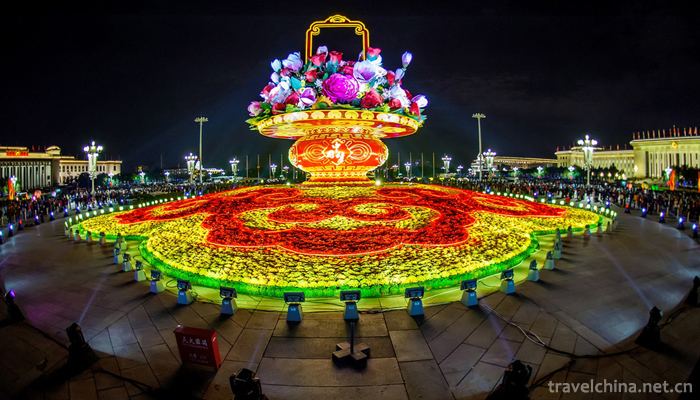
In October 1, 1949, the founding ceremony of People's Republic of China was held.
In 1950, because the distance between the flagpole of the square and Tiananmen Gate was not enough to pass the width of the parade in the future, Huawa and Shilion in front of Tiananmen Gate were moved 6 meters.

In 1954, the Chinese Gate, the Chang'an Left Gate, the Chang'an Right Gate, the Ministry of Hukou Punishment and other government offices, as well as the warehouse chessboard street and other buildings were demolished, and a monument to the people's heroes was built in the square.
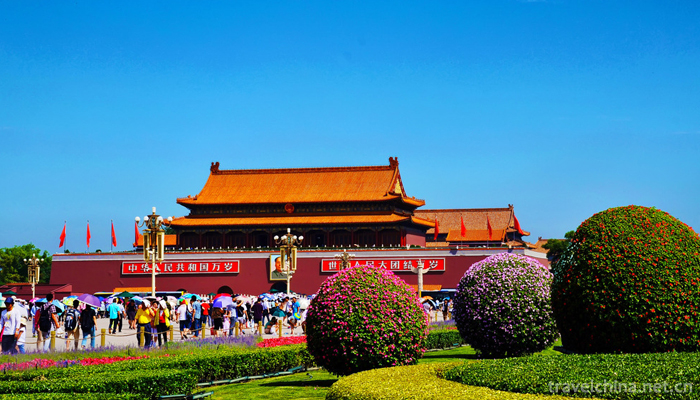
In 1958, to meet the 10th anniversary National Day, Tiananmen square began the largest expansion in history. Removal of the Red Wall at the Chinese Gate, Chessboard Street and Plaza, with a total area of 44 hectares, is nine times the size of the Russian Red Square. Architect Tao Zongzhen, who suggested that the width should be compressed to suit the continuity of the surrounding roads, was told: "It can't be moved. It was decided by Chairman Mao." At the same time, the monuments of the people's heroes erected on the square, the Great Hall of the People, the Chinese Revolution and the Military Museum on both sides of the square have laid the tone of the square as the political center.
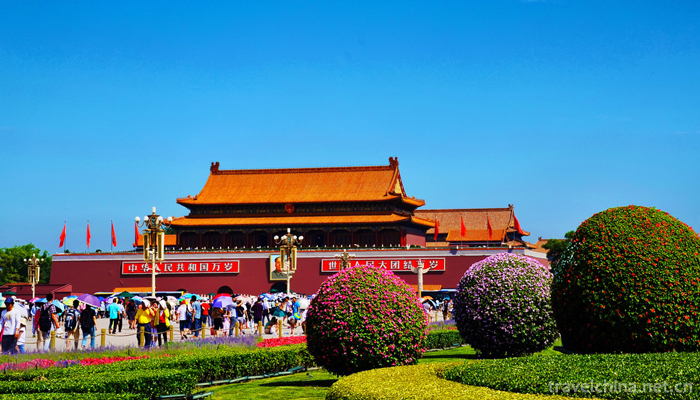
In September 9, 1976, Mao Zedong passed away. Tiananmen square has undergone the last large-scale reconstruction -- the construction of the Mao Zedong Memorial Hall.
On January 1, 1988, the first day of the international tourism year in Beijing, the Tiananmen tower was officially opened.
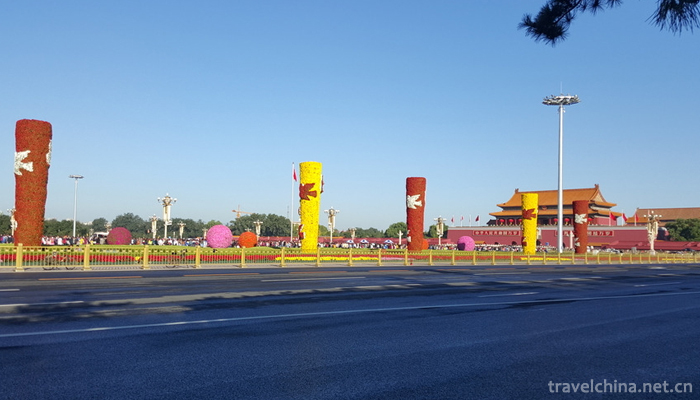
In October 1, 1999, the 50th anniversary National Day ceremony was held.
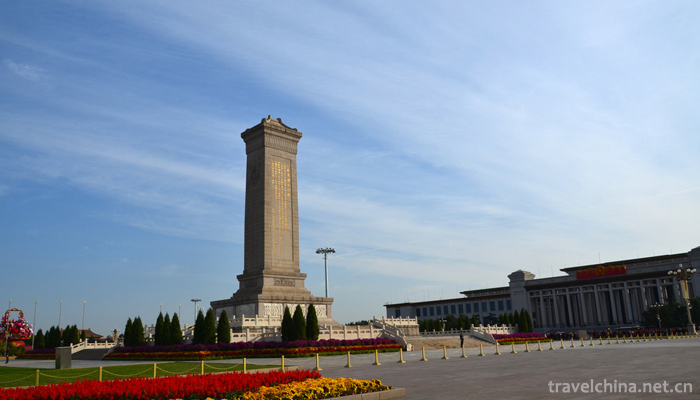
In 2009, to celebrate the 60th anniversary of the National Day, two huge curtains were placed in Tiananmen Square, where scenery films and public service advertisements were scrolled across the screen.
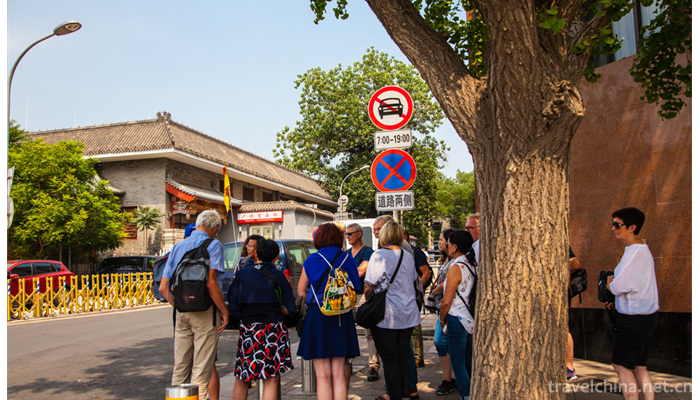
On September 3, 2015, the 70th Anniversary of the Victory of the Chinese People's War of Resistance Against Japan and the World Anti-Fascist War was held in Beijing.
At 7:36 on January 1, 2018, the flag-raising ceremony was held in Tiananmen Square for the first time by the honor guard of the People's Liberation Army and the military band.
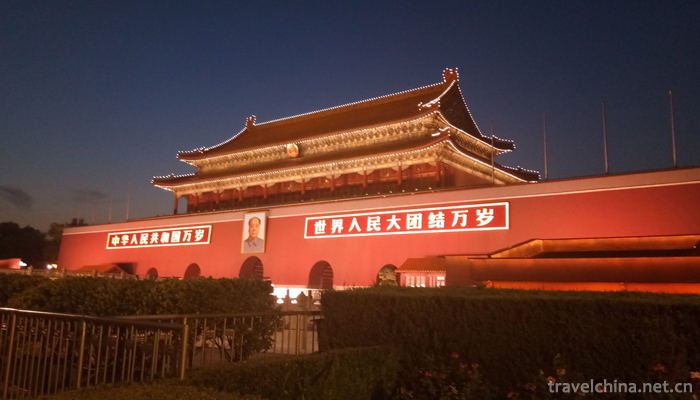
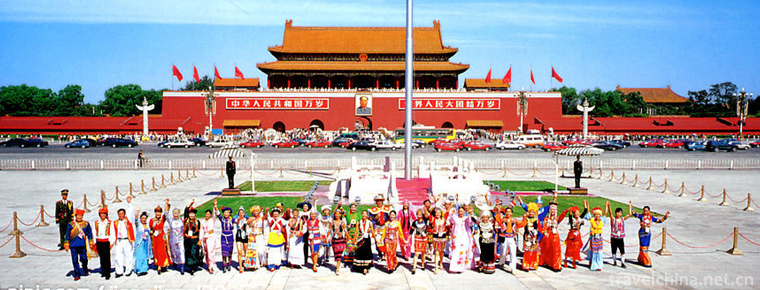
-
1.Hongtong Dahuaishu Ancestor Memorial Garden
Located in Hongdong County, Shanxi Province, Hongdong Dahuashu ancestor-seeking scenic spot is the only national sacrificial site with the theme of "root-seeking" and "ancestor-sacrific
Time 2018-11-24 -
2.Asihatu Stone Forest
Chaihe Tourist Scenic Spot has a total area of 1368.7 square kilometers, which is a national 5A tourist scenic spot. The area of Alshan City in Xing'an League is 7408.7 square kilometers, and Chaihe T
Time 2019-01-02 -
3.Shigu Academy
Shigu Academy, located in Shigu Mountain, Shigu District, Hengyang City, an important city in central and southern Hunan Province, is the birthplace of Huxiang
Time 2019-02-08 -
4.Kirgiz costumes
"Kirgiz" means the people who live on the cliffs. Another saying is that "Kirgiz" are forty girls. This statement is wrong. Most of the Kirgiz people live in Xinjiang's Kizilesu Au
Time 2019-05-09 -
5.Leting drum
Music Pavilion Drum is a representative form of traditional music drum book and drum music in northern China. It is widely spread in eastern Hebei, Beijing, Tianjin and northeastern Liaoning, Jilin, H
Time 2019-05-11 -
6.The legend of Qiren worrying about heaven
On November 11, 2014, the legend of Qiren worrying about heaven was approved by the State Council to be included in the fourth batch of national intangible cultural heritage list.
Time 2019-06-10 -
7.Production Techniques of Oolong Tea
Oolong tea production technology is a local traditional handicraft in Anxi County, Fujian Province. Historically, during the reign of Yongzheng in Qing Dynasty (1723-1735), tea farmers in Anxi County
Time 2019-06-29 -
8.Yigou gou
"Yigou" is a traditional drama in Gaotang area of Shandong Province and one of the national intangible cultural heritages.
Time 2019-07-12 -
9.New brown leaf weaving
Xinfang Brown edition is one of the traditional handicraft products in China. It has entered the third batch of national intangible cultural heritage list recommendation project list. It originated in
Time 2019-08-16 -
10.Hunter peak
Hunter peak is located in the Shuangqiao gully of Siguniang mountain, with an altitude of 5360 meters and adjacent to Jianzi mountain. The two peaks stand shoulder to shoulder, with a huge stone pillar in the middle
Time 2020-11-05 -
11.General situation of Chengdu Giant Panda Base
According to the information on the base's official website in May 2017, Chengdu Research Base for giant panda breeding implements a three-level management mode of "Director Office Department (Center) - team". The director's office has 5 leading posts, including 1 Director and 4 deputy
Time 2020-12-13 -
12.Administrative division of Nanchong
Nanchong City governs nine county-level administrative divisions (Municipal District 3, county-level city 1, county-level 5), and 241 township level administrative divisions (street 42, town 161, township 38). It covers an area of 12514 square kilometers and has a population
Time 2020-12-17